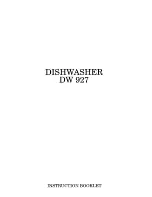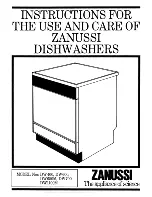
Page EN-29
Installation, connection and starting-up
Having the outlet hose
connected
NOTICE
Malfunction!
Failing to connect the appliance cor-
rectly may cause malfunctions during
operation.
■
Make sure that the waste water can
drain freely at any time. To that end,
the outlet pipe must have a minimum
diameter of 40 mm.
■
Ensure that there are no kinks or dam-
age to the outlet hose.
■
Make sure that the end of the hose is
not submerged in the pumped water.
■
Do not extend the outlet hose or re-
place with another drainage pipe.
Connecting the outlet hose (21) to the trap
(siphon) of your washbasin/sink requires spe-
cialist work.
For this reason, the outlet hose may only be
connected by a professional plumber or a
member of our service department (see „Ser-
vice“ on page EN-40).
Connect the outlet hose’s outlet as follows:
Ø 40 mm
max. 1000 mm
Option A:
Direct connection to the odour seal (siphon)
of your washing/dishwashing basin. The out-
let hose must be a maximum of 1000 mm
above the floor.
Option B:
Connection to a floor drain.
Connecting the inlet hose
NOTICE
Risk of damage to property!
The dishwasher is set up for a water
pressure of 0.4 bar to 10 bar (0.04 MPa
to 1.0 MPa). Water must always be able
to run freely into the dishwasher, oth-
erwise this can damage the appliance.
■
If the water pressure is higher than
this, install a pressure reducer. If in
doubt, enquire about the water pres-
sure with the water supply company.
■
Never connect the appliance to the
water tap or the mixing arm of a wa-
ter heater (continuous fl ow heater,
pressure-free boiler etc.).
■
Ensure that the inlet hose is not
kinked and is carefully connected.
■
Do not cut through the inlet hose.
It contains electrical components. If
the inlet hose is damaged, have it re-
paired by a specialist (see „Service“
on page EN-40).
■
Do not use old or previously installed
inlet hoses.
3















































